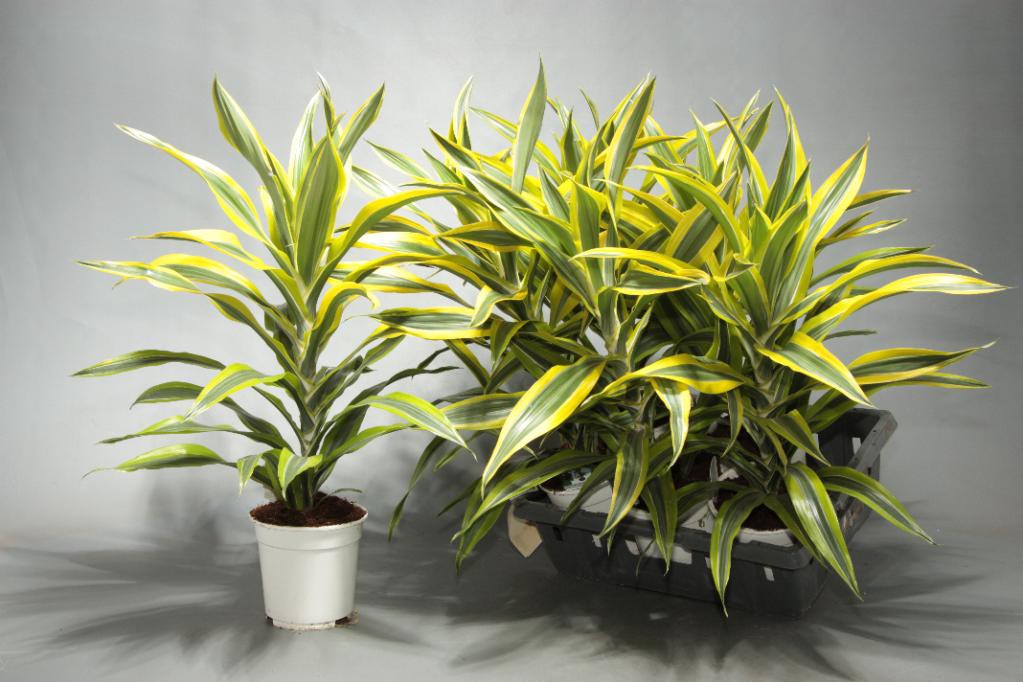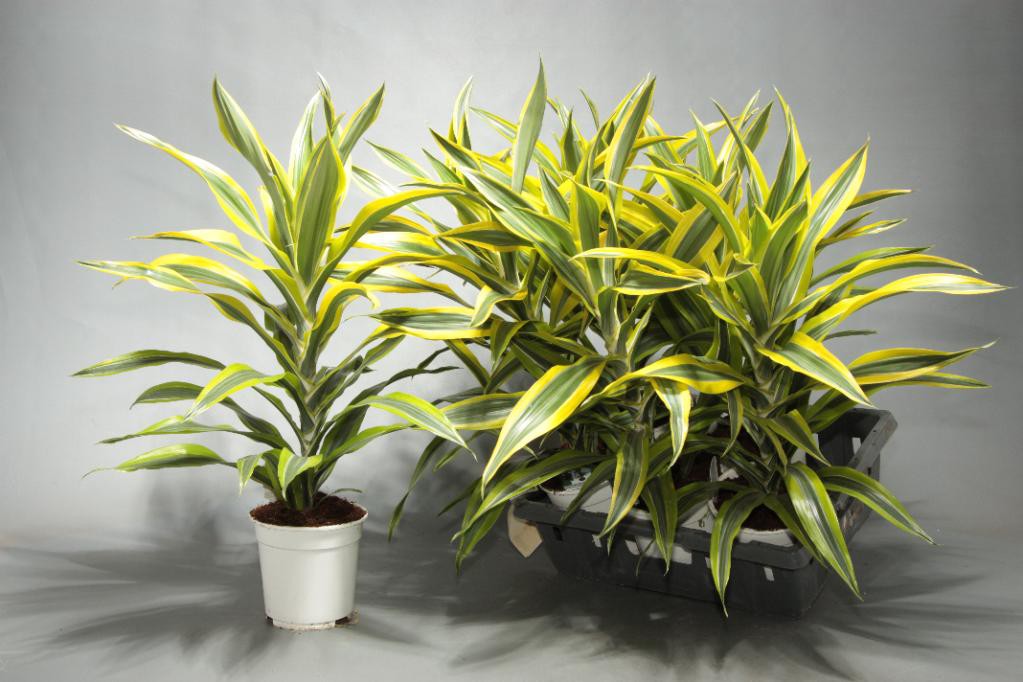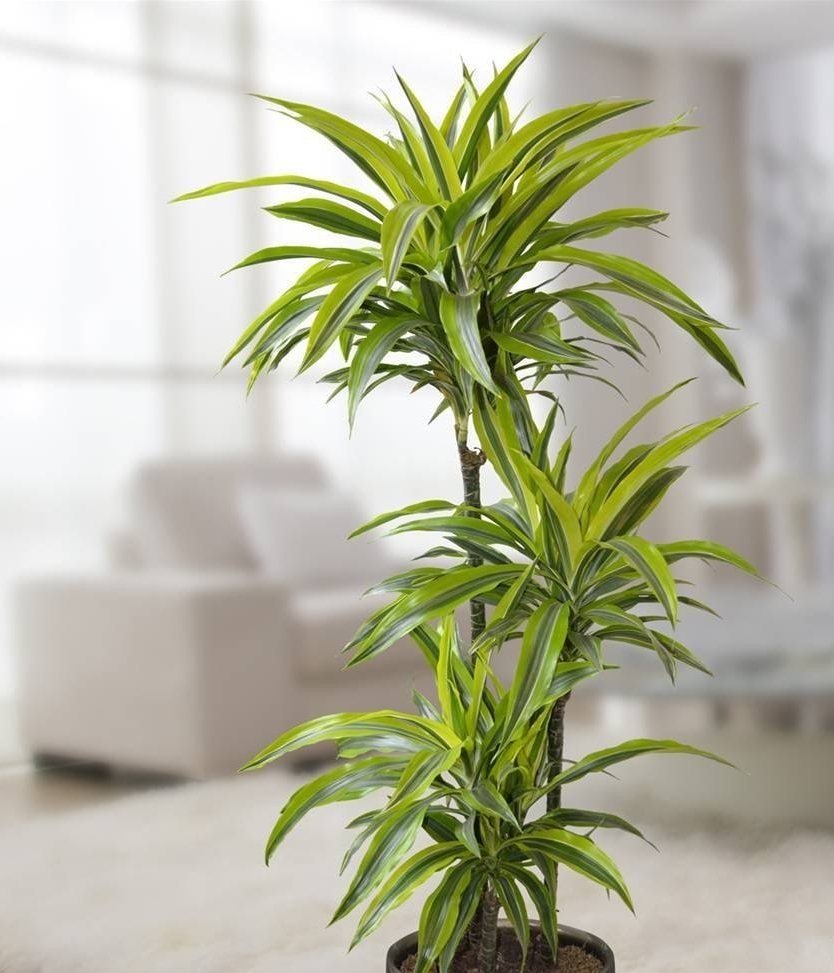Dracaena is a fairly common houseplant, which is a shrub resembling a palm tree with a high stem, which subsequently dulls and becomes more like a tree trunk. Dracaena leaves are bright green and narrow. It is considered not only a houseplant, but also an office plant. Some flower varieties can grow up to 40-50 cm in height.
Dracaena has earned its popularity and love of flower growers due to its spectacular appearance and relative unpretentiousness in care. And yet, in order for the plant to remain healthy and beautiful for a long time, it needs proper care, one of the key points of which is the correct transplant. This will be the subject of this article.
Correct dracaena transplant at home
Any flower needs a transplant from time to time. This process carried out very carefully, so as not to harm the plant and prevent its sudden illness or even death. Dracaena transplant has its own nuances, which we will consider below.
When is a transplant definitely needed?
It is best to replant the plant in late winter or early spring. It is during this period that the dracaena will most easily transfer the transplant to the "new house", because now the time of its active growth and exit from the winter state of dormancy begins.
So, a transplant is necessary in the following cases:
- The rhizome of a flower needs more space to provide the entire plant with the necessary nutrition. In this case, the roots fill the entire pot and are even visible on the surface.
- The flower has just appeared in the house. Flora shops usually sell plants in fragile plastic pots that are not suitable for permanent residence. In addition, when buying, no one is safe from poor soil quality with a minimum amount of nutrients.
- Dracaena was covered with a lot of liquid. This condition will certainly cause rotting and death of the flower.
- Deterioration of the quality of the substrate over time.
- Planned transplant.
- Damage to the plant by pests.
Required tools
To work on a dracaena transplant you will definitely need:
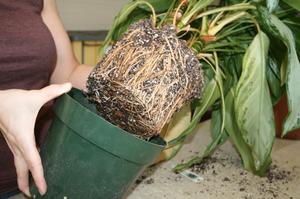 the correct pot;
the correct pot;- drainage;
- substrate;
- spray for water;
- a bowl of water;
- pruning shears or garden shears.
Choosing the right pot
For the further favorable growth of dracaena, the container into which it will be transplanted plays a particularly important role. So, a new pot should not only be beautiful and fit the interior of the room in which the plant lives. When choosing it, one should remember a few basic rules:
- Another pot should be about 2-3 cm larger than the previous one in order to accommodate the overgrown root system of the plant. And it increases by an average of 1–2 cm per year.
- The bottom must be selected with several holes to regulate excess moisture.
- The pot cannot be oversized. In this case, there is a high probability of water retention and the death of the flower.
- For an adult plant, a model made in the form of a glass is considered an ideal option. The material from which the pot is made does not have a significant effect on the growth of dracaena, therefore it can be anything.
Preparing the soil for dracaena
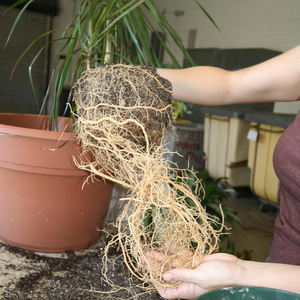 Besides a pot, any plant needs properly selected soil, because it is from it that nutrients come to the flower.Dracaena grows perfectly in any type of soil, but still the best option is a drained substrate with the inclusion of peat in the total composition of acidity from 6.0 to 6.5 pH. It is better not to use the soil taken from the garden plot because of the possibly high content of mineral salts and fertilizers in it.
Besides a pot, any plant needs properly selected soil, because it is from it that nutrients come to the flower.Dracaena grows perfectly in any type of soil, but still the best option is a drained substrate with the inclusion of peat in the total composition of acidity from 6.0 to 6.5 pH. It is better not to use the soil taken from the garden plot because of the possibly high content of mineral salts and fertilizers in it.
You can prepare the soil for transplanting yourself, or buy it ready-made in a specialized store.
For self-preparation, you will need leafy and sod land, taken, for example, in deciduous areas of a park or grove, compost and peat soil. Their ratio in the finished soil should be 2: 1: 1: 0.5, respectively. Other possible drainage is expanded clay balls, crushed bricks or fine-grained river sand.
Transplant technology
How to transplant dracaena without harming it? First you need prepare a new pot - it must be washed with warm soapy water and clean water. Before transplanting, it is considered quite acceptable not to water the dracaena for 1-3 days. This is necessary to dry the soil - it will be easier to remove the flower from the old pot without damaging the rhizome. To release the plant, tilt it upside down and gently pat the pot. The flower is taken out together with an earthen lump.
Now you need to inspect the rhizomes for damage. If any, they should be pruned with a pruner and then cut with crushed charcoal to prevent the spread of infection and decay. After processing, the rhizome should be sprayed with water from a spray bottle.
At the bottom of the transplant container, you must first put drainage layer... It should be pretty thick. Then the drainage is covered with a small amount of the substrate. Now you can safely place the dragon tree in the pot and cover the rhizome with the remaining soil, carefully filling the voids between the roots. Next, you need to tamp the soil around the stem, water the plant - the transplant is over.
Here are some tips for transplanting:
- Florists usually do not recommend deeply deepening the "false palm", otherwise the watering process will become not very convenient. Better to leave the sides.
- The soil should be compacted. To do this, you just need to gently knock the pot on the countertop.
- Some types of dracaena are planted together in one pot, for example "Bamboo of happiness". In this case, one should only take into account the size of the plants and the pot, there are no peculiarities in the transplantation technology.
Dracaena care after transplant
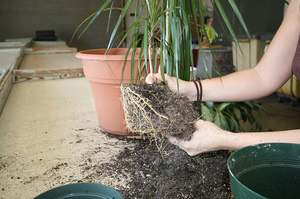 Flower care after transplantation should be at the same level as before. The only difference is adding fertilizer.
Flower care after transplantation should be at the same level as before. The only difference is adding fertilizer.
The plant, as before, should not be exposed to the sun - there is a risk of burns for the leaves. In addition, there should be no drafts. The air temperature in the room with dracaena is needed at least 25 degrees Celsius. You need to water the flower at least 3-5 times a week, quite abundantly. In addition to watering, intensive spraying of leaves from a spray bottle is required - dracaena comes from a hot and humid country.
After the transplant, the dracaena will adapt for about two more weeks - this is the time the plant will need to form the root system. To smooth out the stress state of the flower, you can use a special root growth stimulator "Zircon", but no more than twice a month.
Top dressing of dracaena is usually carried out during the period of active growth, that is, from March to November. In winter, once a month, half the dose of fertilizer.
How to transplant dracaena at home and a detailed description of the transplant algorithm in the video below.
